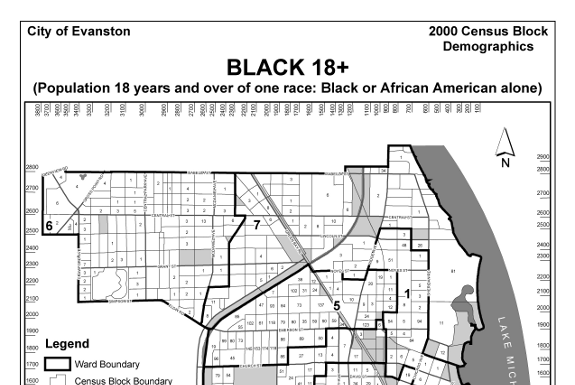I had a pretty great (and very, very educational) time at Drupal Camp Chicago this past weekend. I was particularly interested to attend Bec White’s BoF on using Drupal’s Geo data capabilities to implement the MoveSmart website.   MoveSmart provides a neighborhood finder that attempts to help people discover neighborhoods that would otherwise be part of “racial blind spots“. It’s pretty remarkable that they were able to import, geocode, and weigh more than six different data sets about Chicago neighborhoods to help people discover neighborhoods in Chicago.
One future idea for the site that was mentioned is to include social information showing neighborhood assets as part of the finder results. Bec noted that this is problematic because social content on the web is so segregated. She said (I’m paraphrasing), “I live in Humbolt Park and on Everyblock there is a clear line where the restaurant reviews stop and the crime reports start”.
There is a huge disparity between how (or if) different neighborhood residents use their neighborhood voice on the web. For those who live in well resourced neighborhoods, we take a positive representation of our neighborhood for granted. Even if interacting on sites like Yelp or posting and geotagging photos of our ‘hood in Flickr seems like a waste of time, we can be sure that someone is creating this content. For less resourced neighborhoods, creating social media about the neighborhood might also seem like a low priority, but it means that there are far fewer positive or first-person representations of the neighborhood. Not only does this seem to increase the likelyhood of negative outside perception of the neighborhood, but it also makes discovery of the neighborhood and its assets harder.
Do neighborhood assets (schools, churches, community groups, family) have content that they could put on the web through social media sites? I’m guessing that they do. I’m going to assume that taking snapshots is a fairly universal practice. If this assumption is correct, what barriers exist to these things being shared through social media? Is it because of lack of time, technological familiarity, computer, broadband, or mobile access? Or, is it that they are shared, but not through social network platforms that offers easy (or broadly implemented) programatic retrieval of geographically associated data (e.g. MySpace)?
View OurMap of Environmental Justice in a larger map
One possible model for creating more geographically associated neighborhood social media would be to work with community groups to build maps such as Little Village Environmental Justice Organization’s Our Map of Environmental Justice. While this map, developed by youth in Chicago’s Little Village neighborhood largely shows environmental and social hazards (coal burning power plants, gang territory divisions), it also shows some community assets (schools, parks).   Using a platform like Google MyMaps seems like an easy and fun way for people to represent their neighborhood on the web. Linking to an image in a map seems like it is more conceptually intuitive than geotagging an image uploaded to Flickr. It looks like you can get GeoRSS out of Google MyMaps and this could be parsed into a database and made available to others through an API.
I think that youth in a neighborhood are probably quicker to adopt using social media than older adults. However, I think that youth media efforts often try to get youth to participate under a centralized project. It’s possible that, posting media on accessible platforms, a free-form, decentralized approach could offer a greater benefit. The project could focus on aggregating the social media rather than trying to guide youth to post certain media, in a certain place, in a certain way.
While those looking to discover neighborhoods across racial blind spots would certainly benefit from a broader set of geographically discoverable neighborhood social media, it is ultimately up to individual neighborhoods to decide if they benefit from voicing neighborhood identity and experience on the web.

